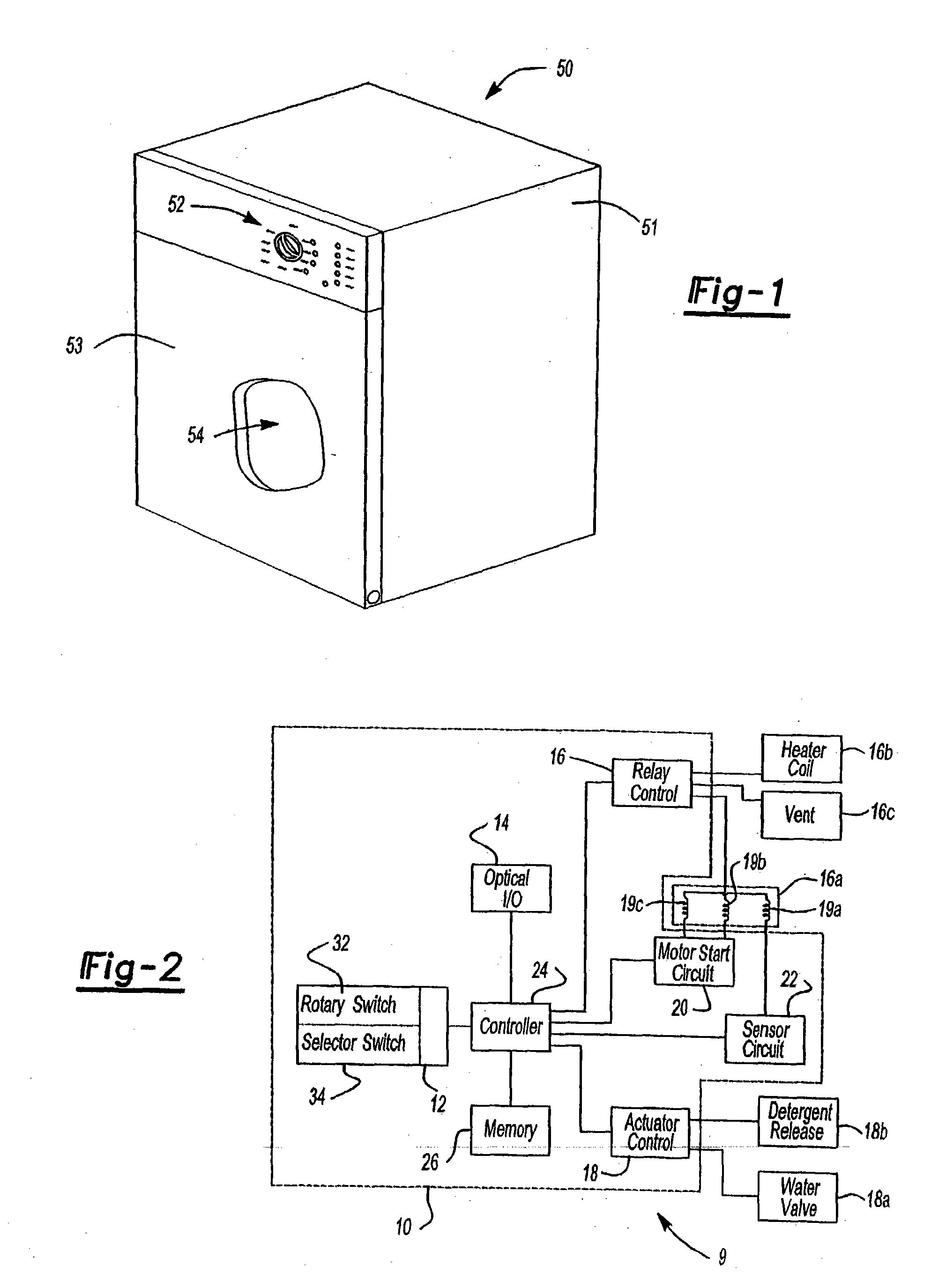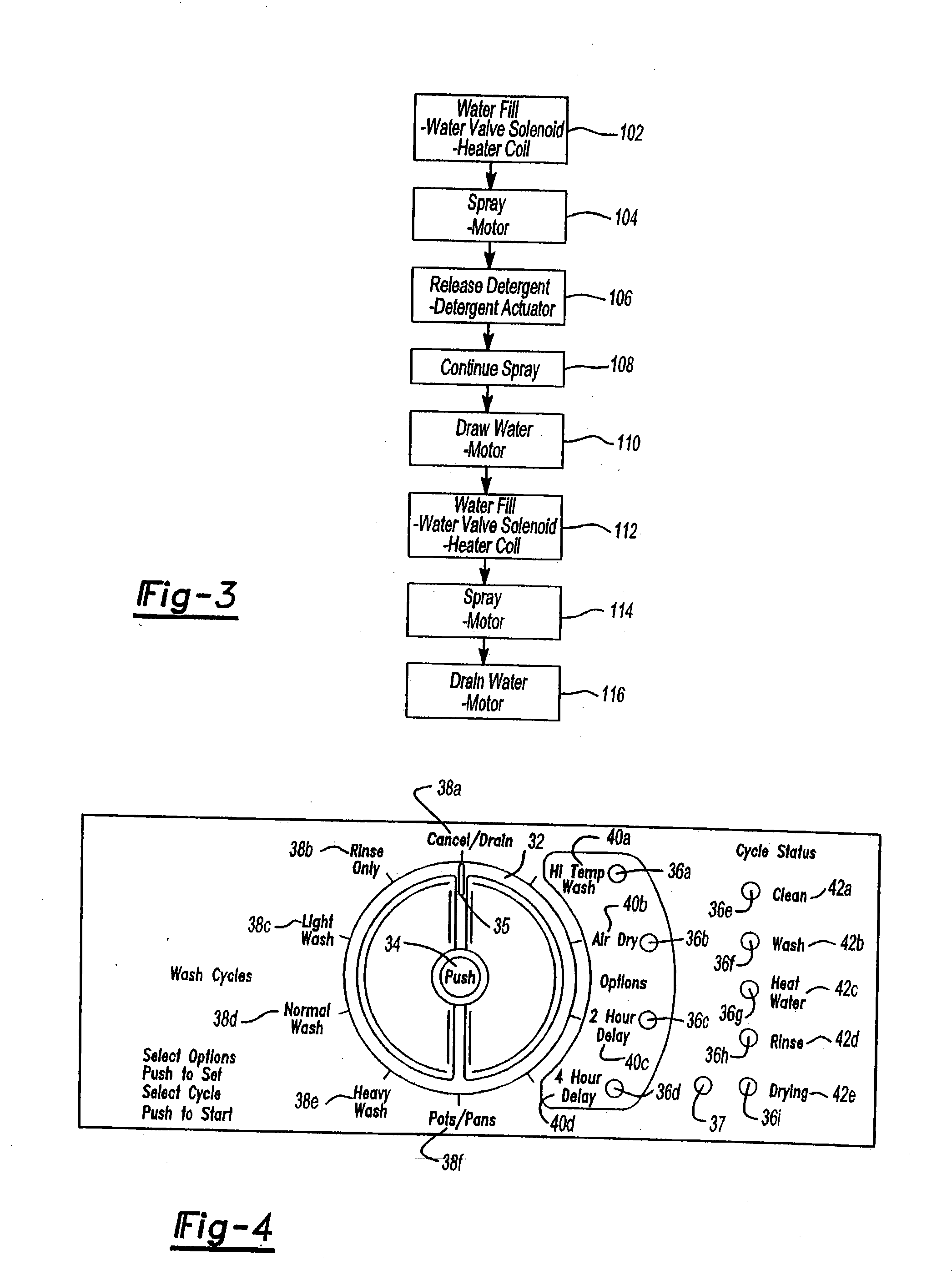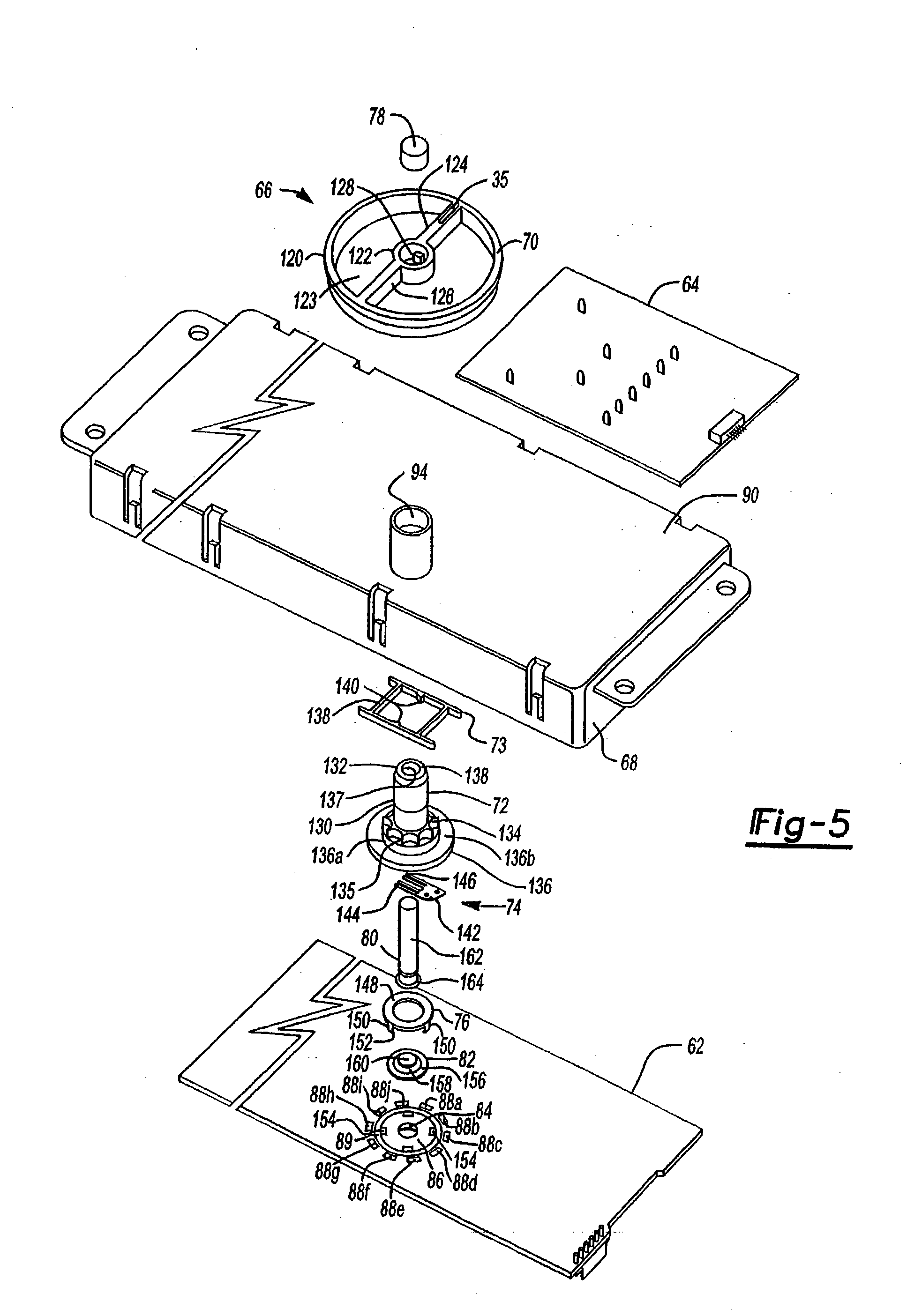Method and apparatus for conserving battery for operation of a low intensity optical communication probe
a low-intensity optical communication and probe technology, applied in the field of optical communication devices, can solve the problems of increasing the complexity of servicing appliances, small electronic integrated circuits that do not lend themselves to troubleshooting and repair methods, and malfunctions in electronically controlled appliances that are more difficult to diagnose and resolve than those of old mechanical cam controlled devices, so as to save the life of batteries
- Summary
- Abstract
- Description
- Claims
- Application Information
AI Technical Summary
Benefits of technology
Problems solved by technology
Method used
Image
Examples
Embodiment Construction
[0036]FIG. 1 shows an exemplary embodiment of a dishwasher 50 in which one or more aspects of the present invention may be incorporated. The dishwasher 50 includes a frame 51, a control panel 52, a door 53, and a tub 54. The door 53 is pivotally attached to the frame 51. The door 53 and frame 51 define an enclosure in which is located the tub 54. The control panel 52 is affixed to the frame 51. The enclosure formed by the door 53 and the frame 51 also houses control circuits and devices as is known in the art. The exact physical arrangements of the door 53, frame 51 and tub 54 are a matter of design choice. For example, the control panel 52 may be mounted on the door 53 in some embodiments.
[0037]FIG. 2 shows a schematic block diagram of an exemplary appliance circuit 9 that incorporates one or more features of the present invention. The appliance circuit 9 includes a control circuit 10 and a set of electromechanical devices. In the exemplary embodiment described herein, the electro...
PUM
 Login to View More
Login to View More Abstract
Description
Claims
Application Information
 Login to View More
Login to View More - R&D
- Intellectual Property
- Life Sciences
- Materials
- Tech Scout
- Unparalleled Data Quality
- Higher Quality Content
- 60% Fewer Hallucinations
Browse by: Latest US Patents, China's latest patents, Technical Efficacy Thesaurus, Application Domain, Technology Topic, Popular Technical Reports.
© 2025 PatSnap. All rights reserved.Legal|Privacy policy|Modern Slavery Act Transparency Statement|Sitemap|About US| Contact US: help@patsnap.com



